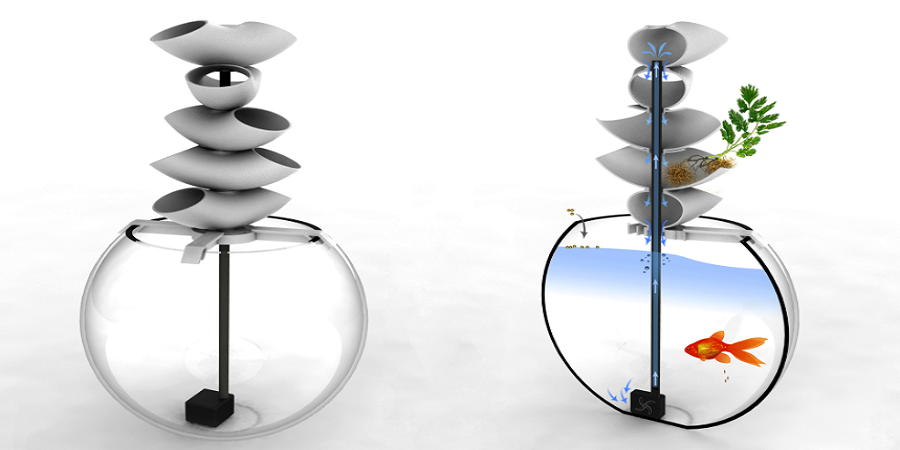Just imagine the soothing sounds of trickling water, a tower of stacked, growing greenery, and fish swirling happily in a beautiful bowl. That would be the Casaqua–and now you can download the 3D files to make it yourself. Featuring a sculptural tower, growing beds, and a beautiful fish bowl, the patent-pending design works with a quiet pump.
Designed by Avooq, this 3D printed system is meant to further the movement toward sustainability and healthy living. In promoting a miniature garden and aquarium, Avooq offers a way for everyone to bring beauty and tranquility to the home. It’s a well-known fact that both plants and fish offer mental health benefits to us all. Plants have not only a pleasing aesthetic quality, but can also help improve air quality and fight pollutants–especially in a small city apartment or home. The combination of flowing water and calmly moving fish can be almost hypnotic, helping to reduce stress and anxiety too.
- 270mm diameter fish bowl with a 170mm diameter opening
- 300L/hour submersible pump
- 8mm O.D. flexible tube
These can all be found easily at places like Amazon.
The 3D printed parts, with some of the outriggers requiring possible modification depending on fishbowl, consist of:
- Cacade planter (5)
- Outrigger 1 (3)
- Outrigger 2 (1)
- Base (1)
It’s recommended that you print with ABS, expecting a print time of around eight hours.
This type of mini ecology is absolutely the most natural method for growing produce and plants, and is also perfect for your fish, as they are not subjected to anything noxious in their filtration system, oxygenated by the plant. Many even believe that this could prove to be a viable method for sustainable food production, well suited to developing nations where such a thing is so badly in need. It’s certainly hard to see how this wouldn’t be completely feasible and enormously beneficial.
Discuss this story in the 3D Printed Cascaqua forum thread on 3DPB.com.
